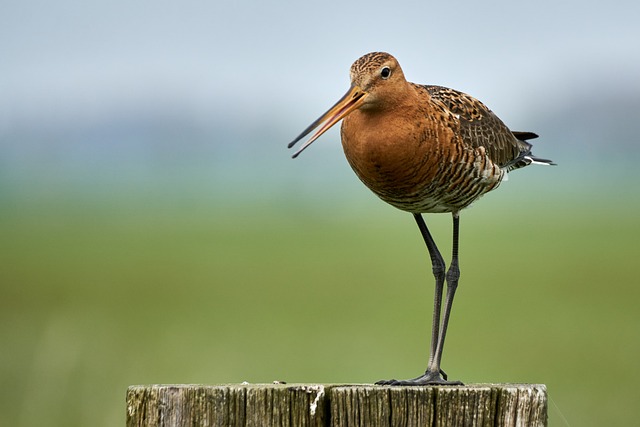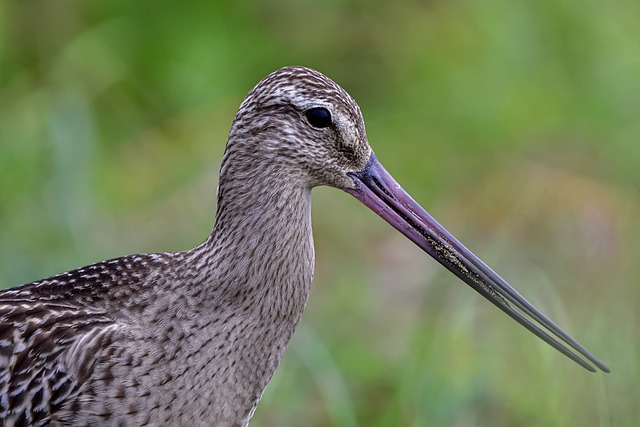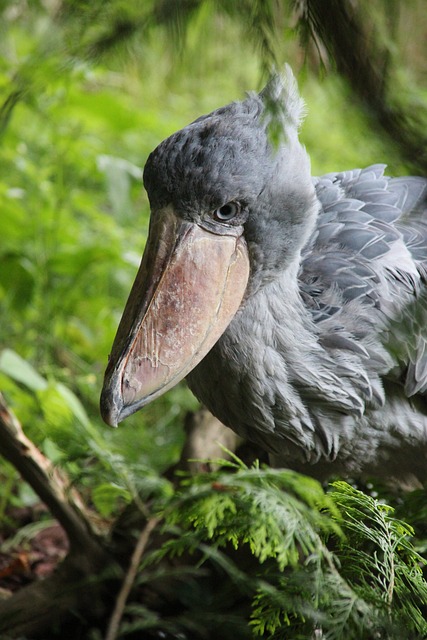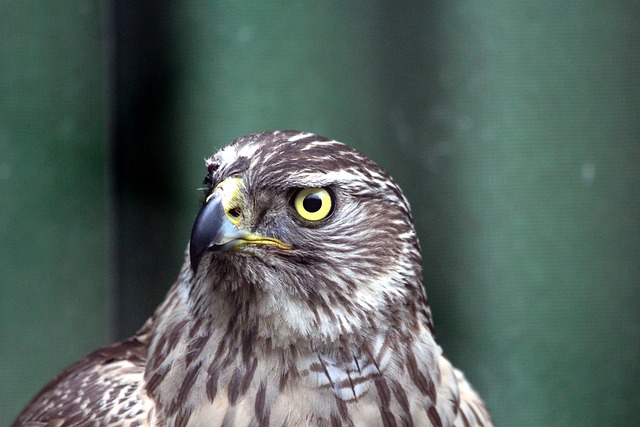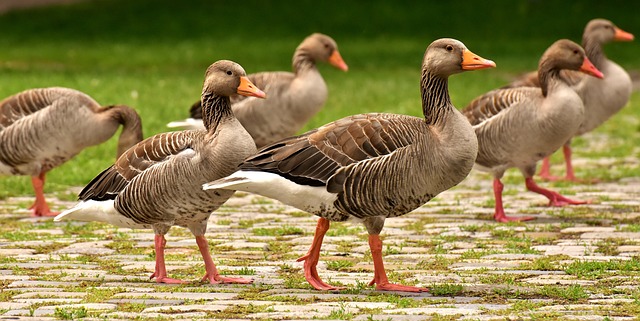The Great Crested Grebe is a species of water birds that can be found in many parts of the world. It is a member of the Podicipedidae family, which consists of about 20 species of grebes.
They are well-known for their spectacular courtship displays and their characteristic head crests.
Introduction
The Great Crested Grebe is a medium-sized bird with an average length of 40-45cm, and a wingspan of about 70cm. Its body is mainly dark greyish brown with a white belly, and its head is adorned with a striking black and white crest. It is further identified by its long, pointed beak and white cheeks and chin.
The Great Crested Grebe can be found in wetlands, lakes, rivers, and other bodies of water across much of Europe and Asia, as well as in parts of Africa and North America. It prefers habitats with plenty of aquatic vegetation, such as reed beds, so they are often found near the edges of water. They usually avoid large open bodies of water, such as large lakes and estuaries.
The Great Crested Grebe is a relatively social bird and can be seen in small flocks of up to 10 birds. During the breeding season, pairs will establish a territory and engage in courtship displays. These displays involve elaborate displays of face-dipping, head-bobbing, and synchronized swimming. The nest is typically built in dense vegetation, usually in shallow water, and is composed of aquatic plants.
The Great Crested Grebe feeds mainly on small aquatic animals, such as crustaceans, mollusks, aquatic insects, and small fish. They forage primarily by diving underwater and scouring for food. During the summer, they may also feed on terrestrial insects.
The Great Crested Grebe is listed as Least Concern on the IUCN Red List, and is considered to be in good health globally. However, their populations have decreased slightly due to the destruction of wetlands, introduction of non-native species, and illegal hunting. In some parts of Europe, it is still legally hunted for food.
The Great Crested Grebe is a fascinating species and is held in high esteem by many cultures. In Europe, it is often associated with springtime and renewal, and is a popular choice as a national bird symbol. The species has also been the subject of several studies to better understand its behavior, ecology, and conservation needs.
Ultimately, the Great Crested Grebe is an interesting species of water bird with unique physical characteristics, behaviors, and conservation needs. It is a species worth learning more about and protecting for future generations.
General Physical Characteristics
The Great Crested Grebe is a graceful, iconic species that brings a sense of awe and wonderment to many. An unmistakable waterbird, they are easily identifiable by their stunning plumage and elegant stature. First and foremost, the Great Crested Grebe stands out by its impressive crest of black and white feathers. This crest is usually visible only during the breeding season and is used to attract potential mates.
In addition to the crest, the Great Crested Grebe has an array of other physical features which make it an easy species to spot. Adults are typically around 18-19 inches in length and weigh up to 1.2 kilograms. They have a long, slender neck and pointed bill which they use to catch their prey. The body is slightly rounded and their wings are relatively long. As for coloration, they are mostly black and white with dark, chocolate brown feathers on the back and wings. The underparts are mostly white with some gray and black patches.
The most striking feature of the Great Crested Grebe is its red eyes, which are surrounded by yellow patches. The white feathers on the face and neck are also quite striking and are usually quite visible even when the crest is not visible.
In terms of general posture, the Great Crested Grebe is an impressive sight when it is at rest. Its long neck is usually positioned in a graceful S-shape and it stands tall and proud with its wings slightly spread. In flight, Great Crested Grebes are incredibly agile, with their wings moving rapidly in an up-and-down motion.
The Great Crested Grebe is also distinguished by its bright yellow legs and feet. This species is a capable swimmer thanks to its webbed feet which help it to maneuver swiftly in the water.
In conclusion, the Great Crested Grebe is a stunningly beautiful waterbird that stands out in any environment. With its impressive crest, red eyes, and black and white plumage, the Great Crested Grebe is a sight to behold. Its size, shape, and color make it an easily identifiable species, and its swimming and flying abilities make it a graceful and graceful sight to behold.
Distribution and Habitat
The Great Crested Grebe is a widespread species and can be found in Europe, Asia, North America, and Africa. Depending on the season, they can also be found in Australia. They inhabit almost any freshwater environment, including lakes, ponds, marshes, and rivers.
Great Crested Grebes prefer to nest in shallow waters, often on floating vegetation in lakes or ponds. In the winter months, they may migrate to larger bodies of water, such as rivers. They also prefer to nest in areas with an abundance of vegetation surrounding them, such as reeds or rushes.
The Great Crested Grebe is an incredibly adaptable species and can be found in many different habitats. In Europe, they are usually found in coastal areas or in marshlands. In North America, they can be found in both freshwater and coastal habitats. In Africa, they are typically found in wetlands and shallow lakes. In Asia, they inhabit inland wetlands and in Australia, they inhabit the shallow fringes of estuaries and other large bodies of water.
The Great Crested Grebe is a highly territorial species and during the breeding season they will defend their nesting areas aggressively. They will also exhibit a unique courtship display, in which the male and female will perform an elaborate dance in the water. This display involves the male and female swimming side by side, with their crests raised.
Great Crested Grebes are also known to nest in colonies, often in close proximity to other species of waterfowl. These colonies can contain up to 100 pairs of grebes and may span several acres.
The Great Crested Grebe is a highly mobile species and they are known to migrate over long distances. They are often found in flocks, especially during the winter months. In Europe, they are known to migrate to the Mediterranean and Black Sea regions in the winter. In North America, they migrate to the Gulf Coast and the eastern seaboard. They have also been known to make long-distance migrations of up to 8,000 kilometers.
Behavior
The Great Crested Grebe is a fairly social species that typically forms small flocks in the winter, although they may not always be together. During the breeding season, they are less social and will form pairs. During this time, they will engage in courtship displays with their mate which often include them stretching out their necks, shaking their heads, and swimming together. During these displays, they make a bubbling sound.
When it comes to nesting, the Great Crested Grebe will build their nests on small islands, floating vegetation, or on the shoreline. The nests are typically made of dead vegetation and are often concealed among the shoreline vegetation. The average number of eggs laid by a pair is 3 to 4, and the eggs are incubated for around 25 days before hatching.
The Great Crested Grebe is a territorial species, and they will aggressively defend their territories against any intruders. This can include any other species of grebe, as well as other waterfowl, such as ducks and geese. They will also dive into the water to pursue any intruders.
The Great Crested Grebe is also an agile swimmer and can reach a speed of roughly 50 km/hour. They will often dive underwater and use their feet to move quickly and evade predators or capture prey. They can also stay submerged underwater for up to 2 minutes.
In terms of communication, the Great Crested Grebe has a wide range of vocalizations which they use to establish and defend their territories. These include whistles, trills, and croaks. They also use a variety of body movements and postures to communicate with one another.
Overall, the behavior of the Great Crested Grebe is fairly typical for a grebe species. They are social in the winter months, but become more territorial during the breeding season. They are also agile swimmers and use a variety of vocalizations and body movements to communicate with one another.
Diet
The diet of the Great Crested Grebe is quite varied and is comprised mainly of small aquatic organisms like fish, amphibians, crustaceans, and insects. This species is mostly a piscivore, which means it feeds mostly on fish. It is also known to feed on other aquatic animals such as leeches, small frogs, and aquatic worms.
Throughout the year, the Great Crested Grebe will feed on different types of prey depending on the season and the availability of food. During the summer, they are known to feed heavily on fish such as minnows and small perch. In winter, they often consume waterfowl eggs and mollusks such as mussels and snails. They will also feed on small mammals and invertebrates during the colder months.
In addition to these regular food sources, the Great Crested Grebe will take advantage of other sources of food when they are available. This species will scavenge for food in the water as well as land. On some occasions, they will also visit bird feeders to eat bread or seeds.
The Great Crested Grebe usually forages alone or in pairs. It will search for food in the shallows and along the shoreline of the lake or river. It is also able to dive down to depths of up to five meters to search for food. While foraging for food, this species will often swim with its head out of the water, making it easier to spot prey.
The Great Crested Grebe is an opportunistic feeder and has been known to consume other birds and their eggs. This species has a specialized bill that it uses to search for food in the sediment. It is also known to take advantage of the fish left stunned by fishermen when they cast their lines.
Overall, the Great Crested Grebe feeds on a variety of small animals, which it is able to find in its aquatic environment. It is an opportunistic feeder and has been known to take advantage of new sources of food when they are available.
Fun Facts
The Great Crested Grebe is a unique and fascinating species. They have some interesting physical characteristics that make them stand out from other birds. To start with, they are the largest species of grebe, measuring up to 30 inches in length and weighing up to 4 pounds. The head and neck of the Great Crested Grebe are black and white, with a thick black line that runs down the neck and a long, sharp crest of black feathers that run along the back of the head. They also have a white or yellow beak and bright orange eyes.
The Great Crested Grebe is also known for its elaborate courtship displays. The male will stretch out his neck and raise his crest feathers to attract the female’s attention. This display is often accompanied by a display of brightly colored feathers and a dueting call.
The Great Crested Grebe is also known for its nesting behavior. The male and female will build a floating nest out of aquatic plant material that is anchored to plants in the water. The nest is built in a sheltered spot and is lined with soft feathers to protect the eggs. The eggs are laid in the nest, and the female will incubate them while the male stands guard nearby.
The diet of the Great Crested Grebe consists of aquatic insects, fish, amphibians, and small crustaceans. They also eat aquatic plant material and small amounts of terrestrial vegetation. The Great Crested Grebe uses its sharp bill to catch and hold its prey, as well as to dig in the mud for food.
The Great Crested Grebe is classified as “Vulnerable” by the International Union for Conservation of Nature (IUCN). The population is declining due to habitat loss and degradation of their wetland habitats. In addition, they are at risk from low levels of pesticides and pollution. Conservation efforts are underway to protect and restore wetlands, and to reduce levels of pollutants in the environment.
The Great Crested Grebe is also viewed by humans as a symbol of peace and harmony. This species was even adopted by the United Nations in 2003 as a symbol of hope and peace. In some cultures, it is believed that the presence of a Great Crested Grebe brings good luck and prosperity.
The Great Crested Grebe also has a unique behavior that sets them apart from other birds. They can take in air, store it in their feathers, and use it to help them dive underwater. This helps them to stay submerged for longer periods for hunting and avoiding predators.
The Great Crested Grebe can also produce different calls and sounds for different reasons. A loud, growling call is used to ward off predators and to communicate with other Great Crested Grebes. A softer, more melodic call is used to attract mates.
Overall, the Great Crested Grebe is an interesting and unique species. From its elaborate courtship displays to its unique behavior, it is a species that is sure to be of interest to birdwatchers and nature enthusiasts alike.
Video


